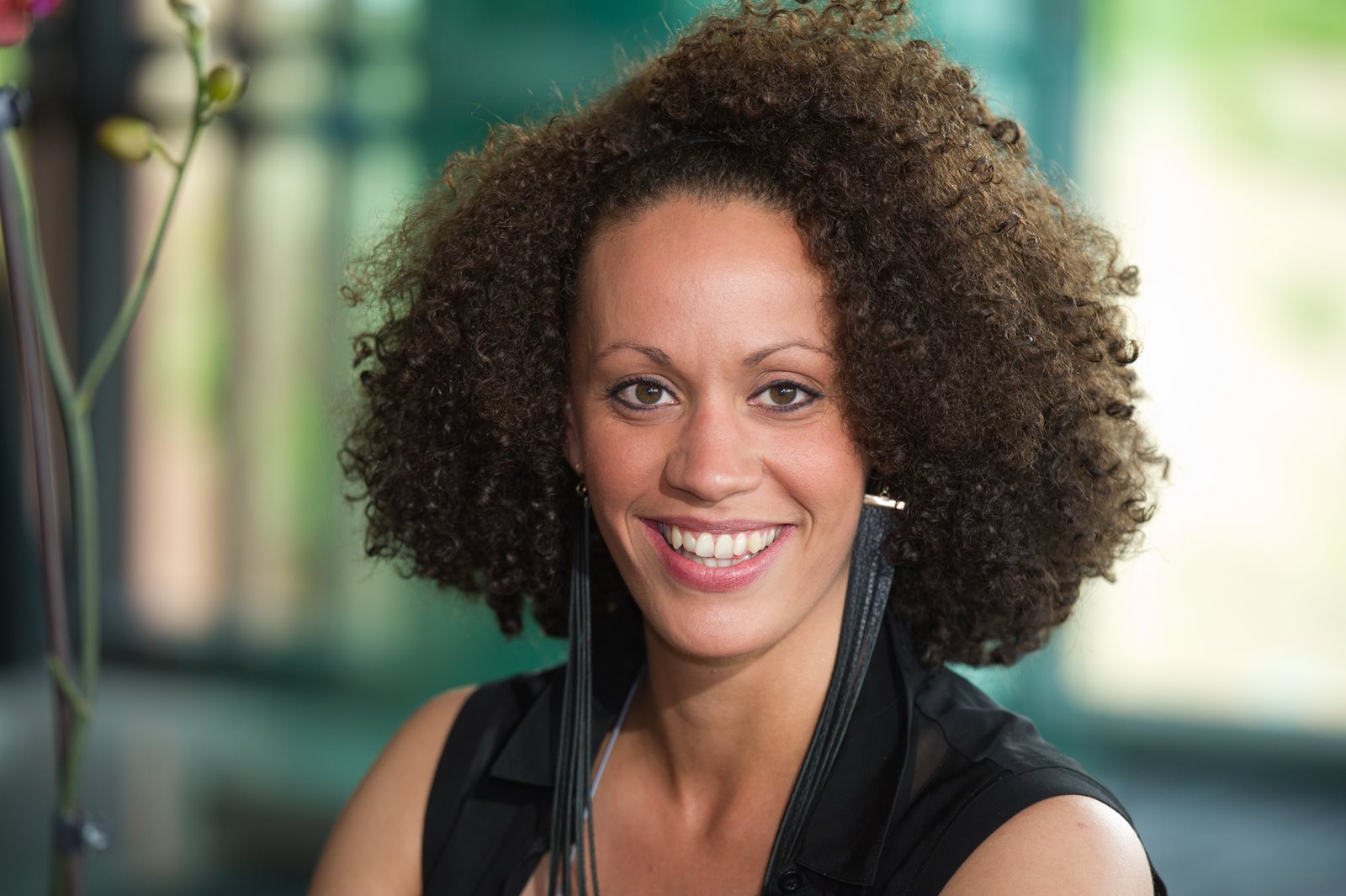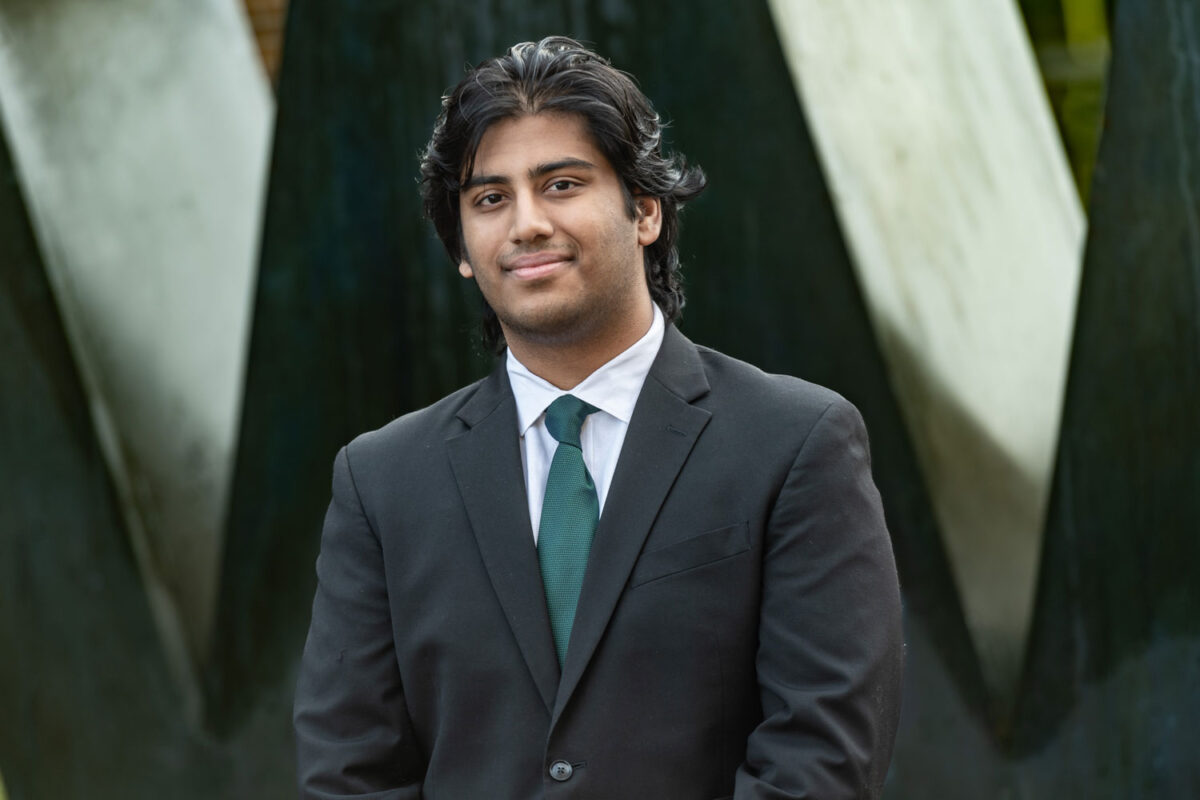By Douglas Esser
Computer games developed as hand motion therapy for stroke and injury patients are more accessible thanks to design experts at UW Bothell’s Digital Future Lab.
Three University of Washington doctoral students in Seattle advanced the idea for games that would keep patients engaged in therapy to rehabilitate hand and arm movements. They call it vHAB for virtual reality-focused rehabilitation therapy.

Photo: Tyler Libey, co-founder of MultiModal Health, demonstrates vHAB.
In 2014 the team won a competition sponsored by the Center for Sensorimotor Neural Engineering, which is funded by the National Science Foundation and is based at the University of Washington.
In 2015, with the help of CoMotion, the University’s collaborative innovation hub, they started MultiModal Health Inc. to bring its clinical use to therapists. The games were designed with commercial gaming software, but they needed polishing to make them more appealing. That’s where UW Bothell’s Digital Future Lab entered.
“We hit it off really well,” said Brian Mogen, one of the cofounders of MutliModal Health and a doctoral student in bioengineering. “And they basically ran with it from there.”
Located in Discovery Hall, next to Makerspace, the DFL is a game development studio that welcomes diverse students. Executive Director Jason Pace has experience in the video game industry. Program Coordinator Aina Braxton, a 2012 UW Bothell graduate, brings the perspective of an artist.
“We built all the back-end mechanics,” Mogen says. “They were much more looking at it through the lens of how to make appropriate user interface, flow and visual aspects to engage people.”
That was one of the biggest problems for MultiModal. “They really helped us,” Mogen says.
Braxton added a complete workflow redesign of screen elements such as menus, buttons and frames. DFL staff also generated art.
Pace designed a “wrapper” or overall structure for the various individual games that would resonate with an older patient – a garden. That gives participants a reason to continue treatment over a series of weeks.
As you play the physical therapy games and complete rehab exercises, you plant seeds that you can watch sprout and grow over time, Pace says.
“You start with a patch of grass but over time you end with a beautiful garden complete with critters,” he says.
The games are played on a laptop, tablet or personal computer equipped with camera-based motion sensors. Hand motions in the air control the games. In one, for example, the user goes through the motion of putting ingredients on a pizza. In addition to the therapeutic value, the software creates a clinical record of activity that measures a patient’s progress.
This month (August), MultiModal Health moved out of the Center for Sensorimotor Neural Engineering into a University District CoMotion building designed to incubate virtual reality and augmented reality startups. Mogen says MultiModal Health would use DFL again and recommends it for software design.
“For folks in the University system developing human interface, they do a really good job of helping you think through what users would encounter.”





